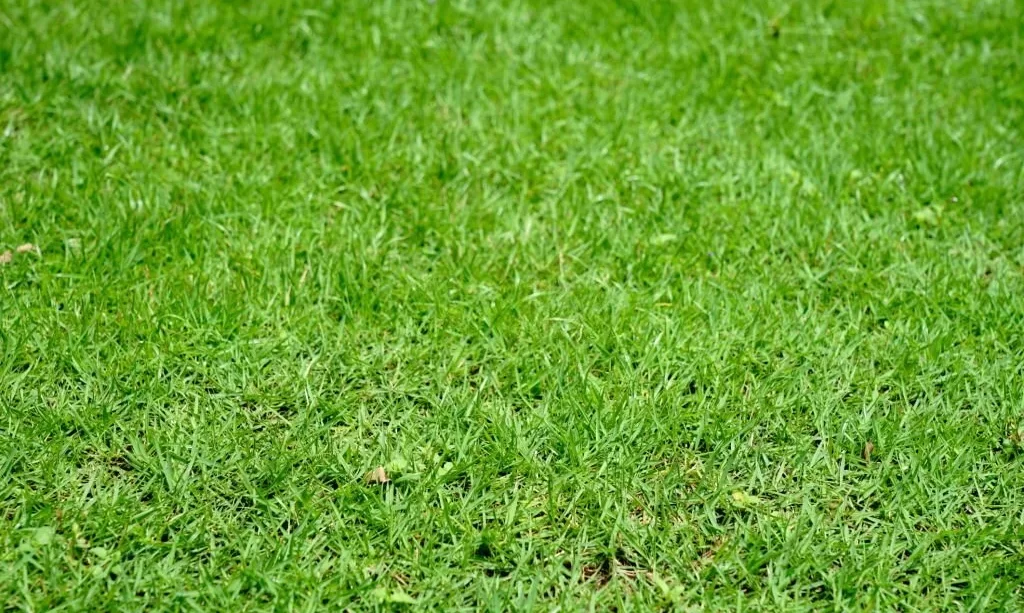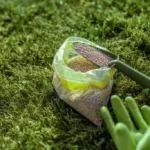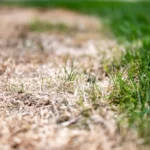Maintaining a healthy and lush lawn is a goal for many homeowners, and Bermuda grass is a popular choice due to its resilience and adaptability. One essential practice in caring for Bermuda grass is scalping, a process that involves mowing the grass at an extremely low height. In this guide, we’ll explore the art of scalping Bermuda grass, highlighting the importance of timing and understanding the growth patterns of this grass variety. Whether you’re an experienced lawn enthusiast or just starting, knowing when to scalp Bermuda grass is key to achieving a beautiful and vibrant lawn.
- [IONMAX 24-Volt System]: Includes 2x 4.0 Ah lithium-ion batteries
- [INCLUDED]: Dual-port charger powers up 2 iON+ batteries in just 1 hour and 50 minutes!
- [POWERFUL]: 800-watt brushless motor runs cooler and lasts longer than traditional brush motors
- [MOVING WIDTH]: 16-inch mowing width
- [ADJUSTABLE DECK]: 6-position manual height-adjustment lever: 1.4 inches to 3 inches
Bermuda Grass Growth
To know when to scalp Bermuda grass, it’s vital to understand how this grass variety grows. Bermuda grass is known for its ability to endure high temperatures and drought, making it a favored choice for lawns in warm climates. It’s a warm-season grass, which means it thrives during the warmer months and goes dormant during the colder ones.
Bermuda grass exhibits a unique growth pattern. It grows vigorously during the summer months, spreading through stolons and producing lush, green blades. However, as winter approaches and temperatures drop, Bermuda grass goes into dormancy. During this period, the grass turns brown and ceases active growth.
Understanding this dormancy cycle is crucial for determining when to scalp Bermuda grass. The best time for scalping is during late winter or early spring when the grass begins to emerge from dormancy. At this stage, scalping can help rejuvenate the lawn, allowing new, healthy growth to thrive and making your Bermuda grass lawn even more beautiful.
The Best Time to Scalp Bermuda Grass
Timing is everything when it comes to scalping Bermuda grass. The optimal time for this process is typically in late winter or early spring, just as the grass is coming out of its winter dormancy. This period marks a critical transition in the growth cycle of Bermuda grass, as it shifts from its brown, dormant state to a vibrant green.
Scalping at this time is advantageous for several reasons. First, it removes the accumulated dead grass and thatch that can stifle the grass’s growth. Second, it allows more sunlight to reach the emerging green shoots, promoting robust growth. Lastly, scalping encourages Bermuda grass to fill in bare spots and creates a more even, dense lawn.
It’s essential to wait until you see signs of active growth in your Bermuda grass before you begin scalping. This ensures that the grass can recover quickly and thrive during the upcoming growing season. Scalping too early, when the grass is still dormant, can stress the lawn and impede its recovery. By timing your scalping right, you set the stage for a healthier and more attractive Bermuda grass lawn.
Preparing for Scalping
Before you embark on the scalping process, there are a few preparations to consider:
- Equipment and Tools: Ensure you have the right equipment, including a lawn mower. It’s best to use a reel or rotary mower for scalping Bermuda grass. Make sure the mower’s blades are sharp to ensure a clean cut.
- Mower Height: Set your mower to the lowest setting, usually around 1/2 to 3/4 inches. This will allow you to cut the grass extremely short, removing the excess thatch and dead grass.
- Debris Collection: When scalping, you’ll generate a considerable amount of grass clippings and thatch. Plan how you’ll collect and remove this debris. You can use a bagging attachment on your mower or rake up the clippings after mowing.
Proper preparation ensures that the scalping process goes smoothly and that you achieve the desired results in rejuvenating your Bermuda grass lawn.
The Scalping Process
The actual scalping process requires some attention to detail. Here’s how to effectively scalp Bermuda grass:
- Set Your Mower Low: Remember to set your mower’s cutting height to the lowest setting, typically around 1/2 to 3/4 inches. This low setting allows you to cut the grass as short as possible, removing dead grass and thatch.
- Mow the Lawn: Start mowing your lawn, moving the mower in parallel rows to ensure an even cut. Be prepared for the grass to look incredibly short and, at first glance, sparse.
- Collect Clippings: If your mower has a bagging attachment, use it to collect the clippings and thatch as you mow. This will help tidy up the lawn and remove the debris that can block sunlight.
- Address the Brown Layer: You may notice a brown layer left behind by the scalping process. This is normal and can be seen as a positive sign. It indicates that you’ve effectively removed the thatch and dead grass.
After-Scalping Care
After scalping, your Bermuda grass lawn will need some post-scalping care to ensure a healthy recovery. Here are the essential steps:
- Watering: After scalping, give your lawn a deep watering. This helps your grass recover and encourages new growth.
- Fertilizing: Apply a balanced fertilizer with a ratio of nitrogen, phosphorus, and potassium suitable for Bermuda grass. This will provide essential nutrients to support new growth.
- Monitoring Growth: Keep an eye on your lawn as it recovers. You should start to see fresh, green shoots emerging within a week or two.
- Regular Maintenance: Continue with your regular lawn maintenance practices, such as mowing, watering, and weed control, to support healthy growth.
It’s important to be patient during the recovery process. Your Bermuda grass lawn may look sparse immediately after scalping, but with proper care and time, it will fill in, becoming denser and more attractive. Scalping, when done at the right time and followed by proper after-care, can help rejuvenate your lawn and contribute to a vibrant and healthy Bermuda grass landscape.
- Scotts Turf Builder Thick’R Lawn Bermudagrass helps turn weak, thin Bermudagrass into a thicker, greener lawn
- Get up to a 50% thicker lawn with just one application (subject to proper care; results may vary based on current condition of lawn)
- Added soil improvers encourage strong root development
- Easily apply with a Scotts spreader across the entire lawn in the spring or early summer once the lawn has greened up and soil temperatures reach 65°F, then water daily, or as needed, for the first two weeks
- One 12-lb. bag seeds 1,200 sq. ft.
Benefits of Scalping Bermuda Grass
Scalping Bermuda grass, when done at the right time and with proper care, offers a range of benefits for your lawn:
- Thatch Removal: One of the primary advantages of scalping is the removal of thatch, the layer of dead grass and organic matter that accumulates on the soil’s surface. Thatch can stifle the grass’s growth, and scalping effectively eliminates this barrier.
- Improved Air Circulation: Scalping enhances air circulation around the grass, which is essential for its health. Better air movement helps prevent disease and mold, promoting a healthier lawn.
- Sunlight Penetration: Removing excess grass height allows more sunlight to reach the emerging green shoots, encouraging robust growth. This sunlight penetration is vital for the Bermuda grass to fill in and achieve a lush, vibrant appearance.
- Aesthetic Enhancement: Scalping results in a tidier and more manicured lawn. It removes the brown and patchy appearance that can occur during the transition from dormancy to active growth, leaving behind a more uniform and visually appealing lawn.
Conclusion
Scalping Bermuda grass is a crucial practice for maintaining a thriving and beautiful lawn. By understanding the growth patterns of Bermuda grass and timing the scalping process to coincide with the grass’s emergence from winter dormancy, you can experience the numerous benefits that scalping offers.
A well-executed scalping, followed by appropriate post-scalping care, rejuvenates your Bermuda grass lawn, promoting healthy growth and a lush appearance. So, whether you’re preparing your lawn for the warm months ahead or seeking a tidy and vibrant landscape, remember that when done correctly, scalping Bermuda grass can be a vital step in achieving a stunning lawn that enhances your outdoor space.






